build a Billion-Dollar Startup with a minimal team thanks to AI
How modern founders are scaling to millions in revenue with tiny teams, lean systems, and zero bloat
For decades, startups have followed the same playbook. They raised capital, hired fast, and scaled headcount as a proxy for momentum. Founders were pressured to build out entire departments, add layers of management, and expand their teams aggressively with each new funding round. Growth was synonymous with bodies on payroll.
But every now and then, a different kind of story breaks through that challenges this assumption. Sometimes, just a small group of people manages to build something truly extraordinary…
Brought to you by Carta’s Q2 2025 VC Fund Performance Report
The report reveals that key metrics are on the rise. The value of the average fund (TVPI) and the rate at which they’ve begun to return cash to LPs (DPI) both climbed for every vintage from 2017 to 2023.
Read the report now to see how your fund compares:
Table of Contents
The Myth of "More People, More Progress"
Why Small Teams Win: Speed, Clarity, and Ownership
Designing the Anti-Fragile Startup: Structure Is Your Strategy
Tools Are Not the Advantage, Systems Are
Hiring Without Bloat: When, Why, and Who
Scaling Without Breaking the Model
The Hidden Cost of Hiring Too Early
A New Kind of Founder
1. The Myth of "More People, More Progress"
When Instagram was acquired by Facebook for $1 billion, it only had 13 employees. WhatsApp had 55 when it exited for $19 billion. YouTube had only 65 when Google bought it for $1.65 billion. These weren’t anomalies. They were the early signs of a recurring pattern in which small, focused teams build disproportionately valuable companies.

What these teams had in common wasn’t just good timing or brilliant product ideas. It was how they were organized. They moved fast because they could. They made decisions without getting lost in alignment meetings. They didn’t just reduce overhead, they eliminated everything that slowed them down.
This isn’t a trend born from AI or belt-tightening investors. It’s a structural advantage that’s always been there, quietly driving some of the most successful tech companies. Lean teams don’t just survive resource constraints, but they often outperform as well.
And today, with better tools, automation, and distribution at our fingertips, the ceiling for small teams is higher than ever. This playbook is no longer niche. It’s becoming the norm.
What follows isn’t nostalgia for scrappy beginnings. It’s a tactical guide to building something great without the bloat.
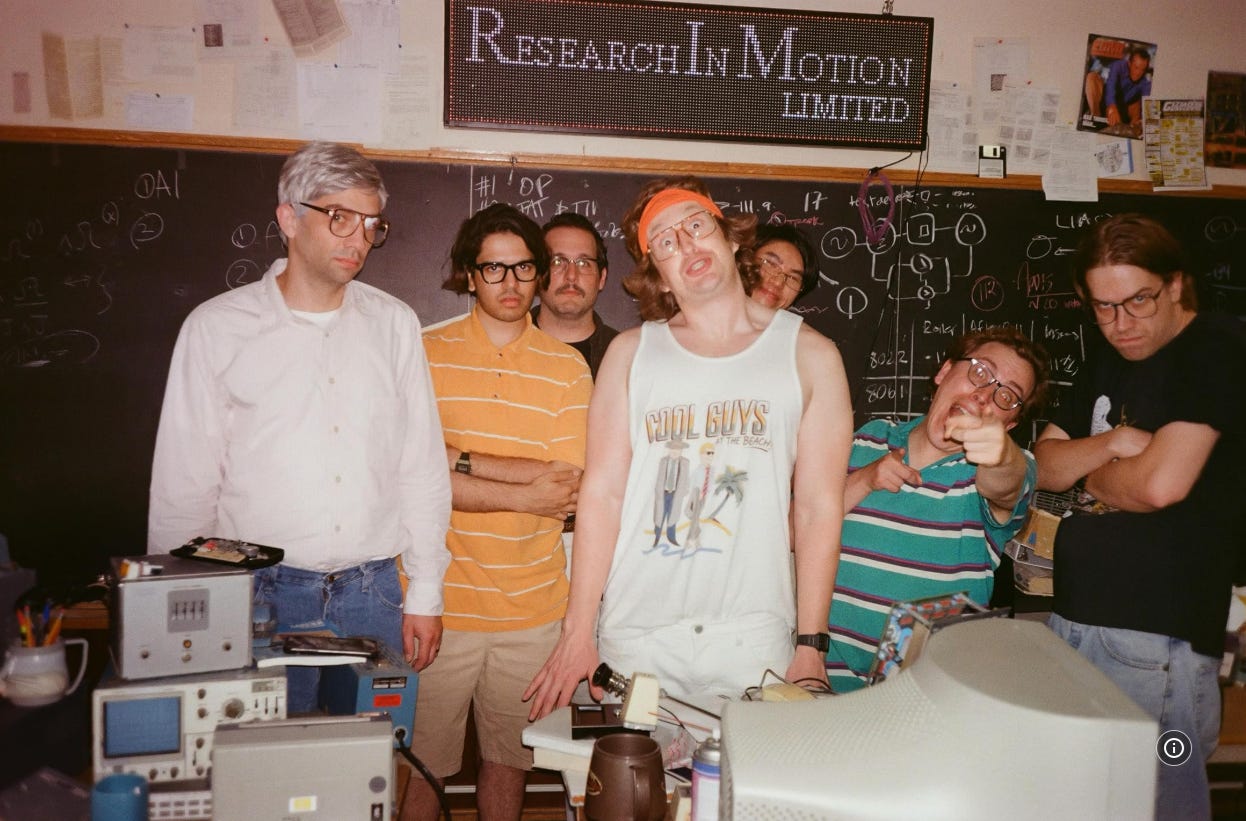
2. Why Small Teams Win: Speed, Clarity, and Ownership
The power of small teams doesn’t come from working harder. It comes from operating differently.
In a tiny crew, there’s no fog of process. No meetings to prep for meetings. No one sitting idle in the passenger seat. Every person is on the critical path. Every decision is direct. When you remove the essence of hierarchy and the weight of coordination, what’s left is velocity.
Speed is embedded into how these teams operate. Trust isn’t something that needs to be earned, documented, or delegated. It’s just there. Everyone knows who’s doing what, and how it connects to the goal. Accountability is visible by default, without needing org charts or project management tools.
Small teams create a foundation of trust naturally. Most startups hire product managers too early, trying to outsource coordination before it’s actually needed. In small teams, coordination happens organically, not because people are superhuman, but because the system isn’t burdened by translation layers. One engineer talks directly to one designer, who talks directly to one customer. That loop ships product.
You see this clearly in companies like Beehiiv, which hit escape velocity with fewer than 20 people by giving small product pods full ownership. Or Gumroad, which crossed $10M in ARR with a team smaller than most Series A startups, by designing a company where decisions didn’t need to travel through six layers to get made.
Small teams also benefit from talent density. You don’t need a hundred people. You just need five who care, who know how to own problems end-to-end, and who move with clarity. These teams don’t ask for permission. They ask what’s next.
3. Designing the Anti-Fragile Startup: Structure Is Your Strategy
Most startups don't fall apart because they're small. They usually do because they lack clarity.
The assumption that more people equals more strength is outdated. Fragility doesn’t come from lean headcount. It comes from bloated structure. From complexity without ownership. From growth without coherence.
The strongest small startups don’t scale by adding layers. They scale by designing systems that make headcount irrelevant to forward motion.
PostHog’s Playbook: Teams as Units of Leverage
Look at PostHog. With fewer than 50 people, they’ve built an astonishing breadth of product, because they’ve architected their team like a fleet of micro-startups. Each unit has 2–6 people. Each owns their piece of business. Each sets their own goals, runs their own reviews, builds their own roadmap, handles their own quality control, and manages their own deployment schedule. No dependencies. No handoffs.
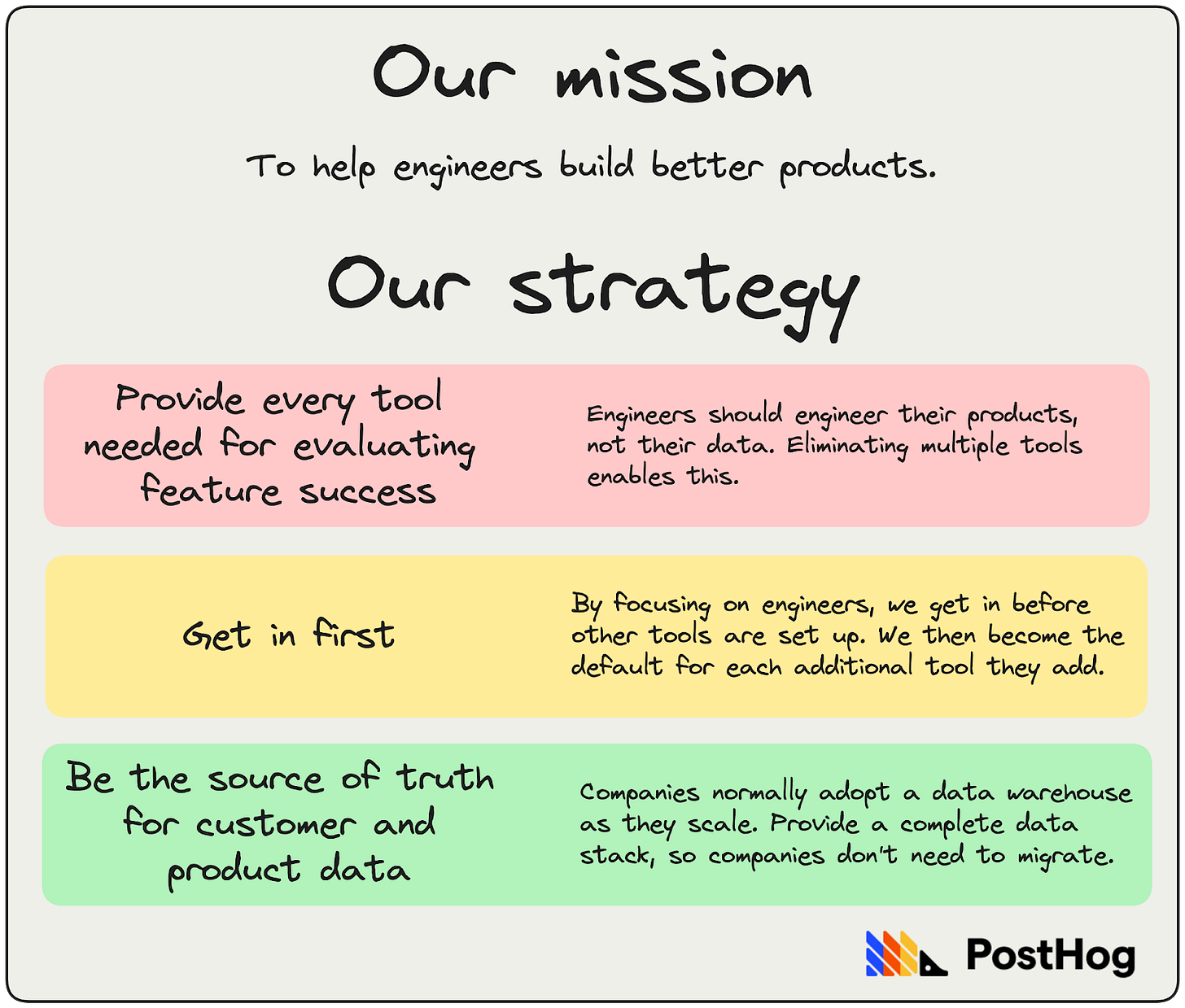
What this solves is not just speed, it’s resilience. If one team stalls, the others keep shipping. If a decision fails, the blast radius is local. It’s not “move fast and break things.” It’s “move fast and contain risk.”
You’ll find echoes of this structure in companies like Basecamp, where ~30 people operate without managers, running profitable SaaS while keeping communication asynchronous and decisions local.
Even Oculus, before being acquired for $2B, was run by a team of 75, proving that it is structure and not scale that powers innovation when the system is built for clarity.

What’s the tradeoff? You need strong generalists who can think beyond their job title. And you need culture to do the work that hierarchy usually handles. Culture means shared values, async transparency, clear goals. But if you have that, this model scales better than the traditional department-led structure.
This is startup DNA, preserved at scale.
Systems, Not Silos
A startup isn’t defined by its headcount. It’s defined by its loops.
Revenue loops. Product loops. Feedback loops. Small teams win when they operate within tight, self-sustaining systems, where every action feeds the next, without having to cross a departmental chasm.
The moment your marketing team has to wait two weeks for the data team to send a report, you’ve already lost velocity. The moment customer feedback takes five meetings to reach the product lead, you’ve diluted its truth. Structure should accelerate signal, not dampen it.

Building Your Own “Startup of Startups”
To replicate this model, you need to:
Create autonomous pods. Give each team a clear mission, a surface area, and the authority to ship.
Use shared metrics. Let every team see how they’re contributing to the same outcome.
Shorten your decision cycles. Work in 6-week sprints. Async check-ins. Write simple one-page reviews of what worked and what didn’t.
When your structure is clean and clear, people don’t get stuck in confusion. On the contrary, they keep moving forward.
Culture First, Structure Follows
Most importantly, how you structure isn't just about operational efficiency. It’s about identity.
The way you organize work tells your team what you value. Things like autonomy, ownership, and speed don’t just happen by accident. They’re engineered. Founders often forget this.
A fragile startup asks, “Who do I escalate this to?” An anti-fragile one asks, “What’s the fastest way to fix it?”
Design your company accordingly.
4. Tools Are Not the Advantage, Systems Are
There’s a common trap that catches a lot of founders: mistaking tools for leverage. They load up on automation software, buy the latest AI co-pilot, integrate a dozen SaaS platforms, and wonder why things still feel slow.
The problem isn’t the tools. It’s the absence of a system.
Efficiency doesn’t come from stacking software. It comes from designing workflows where human effort is scarce, deliberate, and respected. Where every task is interrogated by “should this even exist?”, way before it’s automated. A tool that accelerates a broken process doesn’t solve the problem. It just lets you waste time faster.
The Pieter Levels Playbook: Orchestration > Automation
Pieter Levels isn’t famous because he’s a quirky solo founder. He’s famous because he built a portfolio of million-dollar businesses, with no team, by mastering systems design.
Nomad List, Remote OK, Rebase. These aren’t just websites. They’re tightly engineered machines where user behavior fuels the business. Levels didn’t scale by coding more features. He scaled by removing friction until his products could practically run themselves.
Here’s how Nomad List works:
Users generate content by logging cities, sharing feedback, and updating cost-of-living data.
That content drives long-tail SEO. That means hundreds of thousands of pages indexed organically.
SEO brings traffic. Traffic drives paid subscriptions.
Paid members moderate the community and keep quality high.
No support team. No sales. No marketing department. Just a loop. The AI tools he uses, such as image generation, email drafts, moderation filters, are simply supporting acts, not the core engine.
This isn’t automation. It’s orchestration.

You see a similar pattern in the early days of Minecraft, built and monetized by Markus Persson with no marketing team, no sales ops, and no infrastructure beyond a community and a download button. A self-reinforcing loop where product quality drove fan engagement, which drove sales, which funded better development.
Start With the System, Not the Stack
Too many founders start with “What tools should we adopt?” The better question is: What’s the most repetitive task I still do manually? And then: Does this task need to exist at all?
Only after that should you reach for automation.
Because if your system is bloated, AI won’t make it better. It’ll just make it faster, and more expensive to run.
5. Hiring Without Bloat: When, Why, and Who
Most founders treat hiring as a milestone. Something to celebrate. A marker of progress.
But in the early stages, hiring isn’t just a decision, it’s a liability. Every new person adds weight: more conversations, more context-sharing, more complexity. If you're not careful, your team grows faster than your understanding of what you're actually building.
The better approach is to hire as a last resort. Build the system first.
Ask: Can this be automated? Can it be templatized? Can it be outsourced temporarily?
Only when the answer is no, and the task is mission-critical, should you bring someone on. And even then, the bar should be sky-high.

Don’t Hire for Roles. Hire for Outcomes.
Early-stage teams don’t need specialists working in their own little bubbles. They need people who can own problems from start to finish.
That means looking for T-shaped people, with deep expertise in one area, but broad skills across others. A marketer who can write code. A designer who understands conversion funnels. An engineer who enjoys talking to customers. What matters isn't whether someone fits neatly into an org chart. What matters is whether they can deliver results without needing constant coordination.
Instead of building departments, build missions. Then find people who can lead those missions with complete autonomy.
Avoid the Early Bloat Traps
You don’t need:
A product manager to write tickets that nobody asked for.
A sales development rep to book meetings for a founder who isn’t ready to sell yet.
An HR lead to manage a team of eight people.
You need craftspeople who see the whole picture. You need operators who think in loops. You need builders who don’t ask for permission.
Before Amazon acquired Twitch for $970M, it ran lean with around 100 employees. Another proof that hypergrowth in a niche category doesn’t always require bloated teams. It just needs extreme product focus and community leverage.
If your startup’s first instinct is “we need someone for this,” pause instead. Try: “We need a system for this, and if that doesn’t work, we’ll find one person who can handle it like three people would.”
That’s how you hire without breaking what’s working.
6. Scaling Without Breaking the Model
Starting small is the easy part. Staying small in spirit as you grow; that’s where it gets tricky.
The real test comes when your product takes off, revenue grows, and the demands start multiplying. More customers. More features. More edge cases to handle. The natural reaction is to scale by hiring: more teams, more managers, more layers.
But if you’re not careful, what made your company work in the first place, the speed, the clarity, the ownership, it starts to slip away. You don’t just add people. You add friction.
The Networked Core
One way to scale without bloating is to build a networked core.
At the center: a small, permanent team. Think of this as your command unit, your nucleus. The people who own the vision, the roadmap, the culture.
Around that core: a modular ring of fractional hires, contractors, agencies, and AI-driven processes that expand and contract with your needs. This outer layer handles high-skill or high-volume work without forcing you to internalize every function.
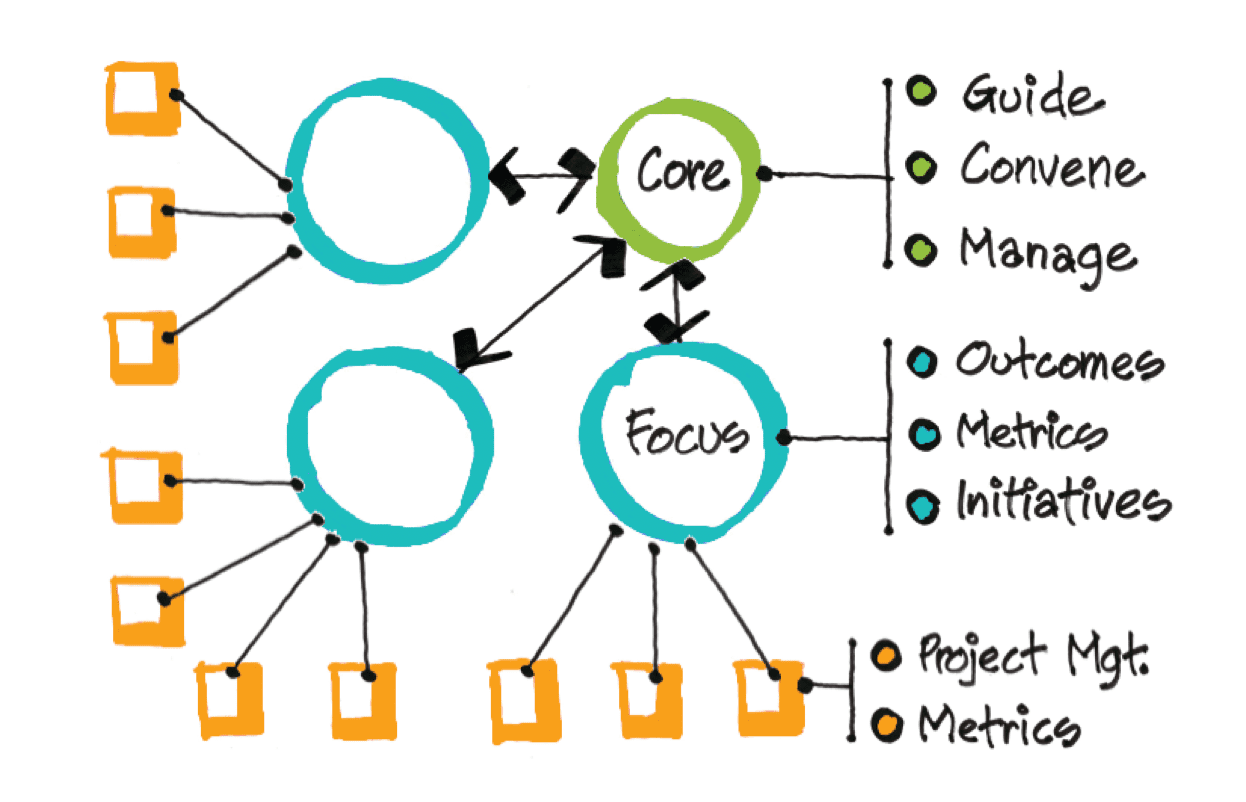
Another example is Waze, which was acquired by Google for $1B. The company scaled through a hybrid model, combining a lean internal team with an external network of user-generated data, volunteer map editors, and crowdsourced reports that made the product smarter without adding internal complexity.
Design your support to be flexible. Build your marketing to scale up for launches, then taper down. Use AI for routine operations. Hire specialists for narrow missions, not to hit headcount targets.
Agility Scales. But Only by Design
Being lean doesn’t mean being fragile. What’s fragile is a bloated team doing shallow work.
If you build from the inside out, with a tight core and an expandable shell, you retain agility as your surface area grows. You can scale output without scaling meetings. You can handle more complexity without adding confusion.
That’s the art: grow what matters, not what’s measurable. The best founders don’t just scale companies. They scale clarity.
7. The Hidden Cost of Hiring Too Early
Talk to any founder who scaled before finding product-market fit, and the regret sounds eerily similar: “We hired too fast.”
It starts with optimism. A few wins, some funding, and suddenly it feels like time to “build the team.” But without a strong foundation, clear product value, tight customer feedback loops, repeatable acquisition, adding headcount multiplies uncertainty, not progress.
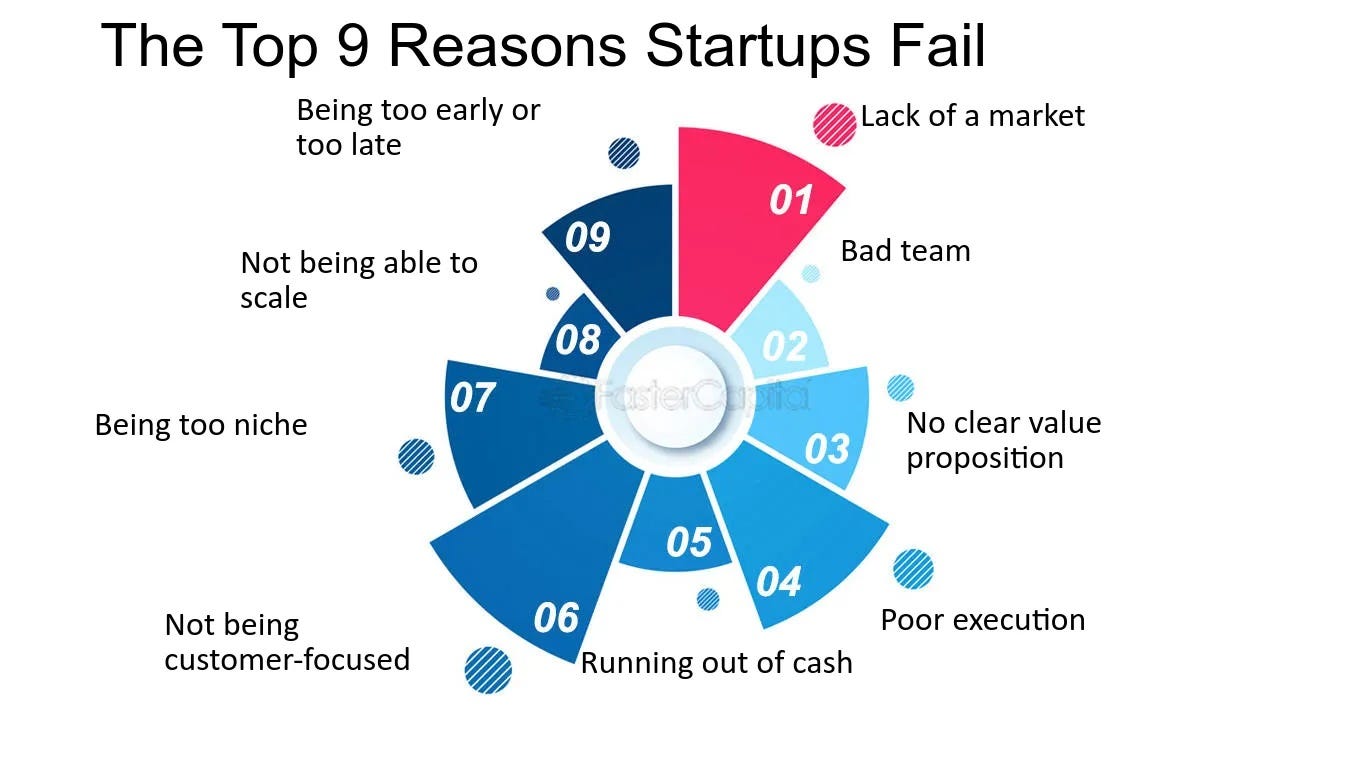
Organizational Debt Is Real
Hiring too early doesn’t just burn through capital faster. It also adds coordination debt, more people to align, onboard, and manage.
It adds emotional debt, the pressure to justify roles that don’t yet drive impact.
And it adds cultural debt, which means diluting the ownership mentality that small teams thrive on.
Momentum gets replaced by busy work. You’re running meetings instead of experiments. Reviewing work instead of shipping products. Suddenly, everything takes longer, and nobody’s quite sure why.
Complexity Has a Cost
Every new person is a node in the network. More decisions need alignment. More tools require access permissions. More layers demand explanation.
And when your product inevitably shifts direction, as it always does, you're now carrying people who were hired for a version of the business that no longer exists. That's a tough spot to be in.
Replace the Default Question
Before hiring, don’t ask: “Do we need someone for this?”
Ask:
“Can we redesign the workflow?”
“Can we automate this layer?”
“Can we outsource this edge just long enough to stay lean?”
Headcount is not a badge of progress. It’s a bet on clarity. Make sure you’ve earned it.
8. A New Kind of Founder
The archetype is changing.
The founder of the future isn’t the one who raises $100 million and hires a hundred people. It’s the one who runs $10 million in revenue with five people, and sleeps well at night.
The solo founder who orchestrates growth through systems, not stress.
The three-person team with a product that sells itself and supports itself.
The six-person company doing six figures a day with no meetings and no drama.
These aren’t unusual cases anymore. These aren’t outliers. They’re becoming the new standard.
The shift goes deeper than just efficiency. It’s about elegance. Ownership. Sustainability. The best founders today aren’t chasing growth for its own sake. They’re building companies they can control, evolve, and be proud of, without getting crushed under the weight of their own organizational complexity.
Small is not just beautiful. It’s strategic. It’s sane. And in the right hands, it’s unstoppable.
RESOURCES 🛠️
✅The Venture Capital Method: How Investors Really Value Startups
✅IRR vs Return Multiple Explained + Template
✅ The Headcount Planning Module
✅ CLTV vs CAC Ratio Excel Model
✅ 100+ Pitch Decks That Raised Over $2B
✅ VCs Due Diligence Excel Template
✅ SaaS Financial Model
✅ 10k Investors List
✅ Cap Table at Series A & B
✅ The Startup MIS Template: A Excel Dashboard to Track Your Key Metrics
✅ The Go-To Pricing Guide for Early-Stage Founders + Toolkit
✅ DCF Valuation Method Template: A Practical Guide for Founders
✅ How Much Are Your Startup Stock Options Really Worth?
✅ How VCs Value Startups: The VC Method + Excel Template
✅ 2,500+ Angel Investors Backing AI & SaaS Startups
✅ Cap Table Mastery: How to Manage Startup Equity from Seed to Series C
✅ 300+ VCs That Accept Cold Pitches — No Warm Intro Needed
✅ 50 Game-Changing AI Agent Startup Ideas for 2025
✅ 144 Family Offices That Cut Pre-Seed Checks
✅ 89 Best Startup Essays by Top VCs and Founders (Paul Graham, Naval, Altman…)
✅ The Ultimate Startup Data Room Template (VC-Ready & Founder-Proven)
✅ The Startup Founder’s Guide to Financial Modeling (7 templates included)
✅ SAFE Note Dilution: How to Calculate & Protect Your Equity (+ Cap Table Template)
✅ 400+ Seed VCs Backing Startups in the US & Europe
✅ The Best 23 Accelerators Worldwide for Rapid Growth
✅ AI Co-Pilots Every Startup & VC Needs in Their Toolbox


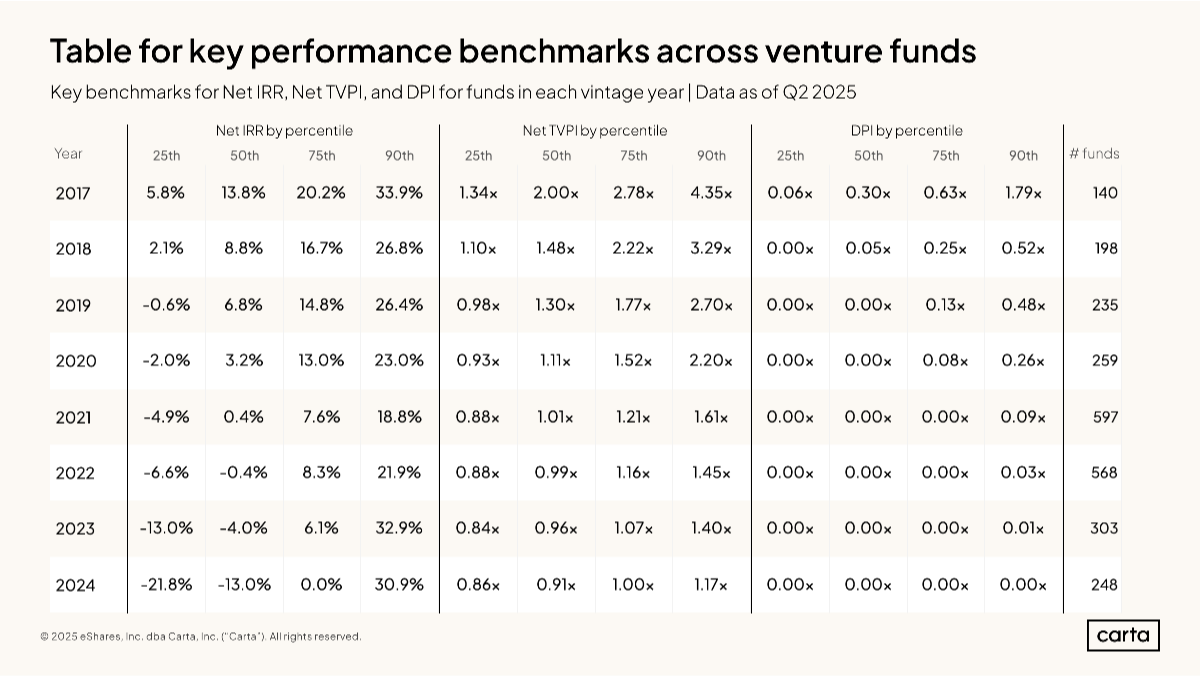
"When Instagram was acquired by Facebook for $1 billion, it only had 13 employees. WhatsApp had 55 when it exited for $19 billion. YouTube had only 65 when Google bought it for $1.65 billion."
That's actually a perfect argument that a lean team can achieve commercial success regardless of whether it's the AI era or not. Last years have just provided us with more examples (although it's yet to be seen whether supernovas like Lovable will still be industry darlings in a decade from now; the revenue/cost math with AI is *very* different).
However, the "standard" playbook (raise money, hire fast, use headcount as a proxy for growth potential) was broken from the very beginning. I perceive it as a system issue:
1. Raising money was the default move for startups, so startups did raise.
2. With money came growth expectations from the investors and a timeline of 12-18 months to use the funds.
3. The only fathomable option to spend the money was to hire (or, sporadically, acquisitions).
4. So hire they did.
If they didn't, they'd get uncomfortable questions from the investors. Seriously, do you know a startup that raised a significant round and then decided to stick with their guns as if they hadn't received a bag of gold?
No matter how fund-hire-grow assumption was a default way (the only way for many) to operate, I don't think we have quantitative data to confirm it was the best path.
If such data existed, we should see a correlation between growing average funding rounds (which has happened) and increasing success rate (which has not). As for an industry that talks that much about being data-driven, that's *a lot* of herd behavior.
One of the best articles I have seen to articulate to my team, this exact concept of lean committed teams.
Jock Willink speaks on this in Extreme Ownership.